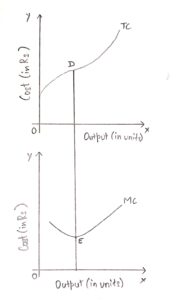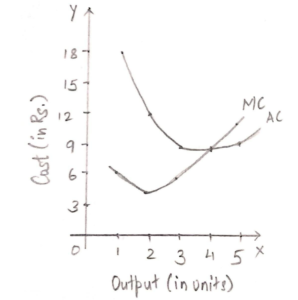Relationship Between Total Cost, Marginal Cost, and Average Cost
Relationship between different types of cost explains the relationship between total cost, marginal cost, and average cost class 11 notes gives a wholesome understanding of the relationship between these three. There are several types of short-run costs Average Cost (AC), Marginal Cost (MC), and Total Cost (TC). There exists a close relationship between the various types of short-run costs. Let us look into the relationship between the different types of short-run costs.
- Relationship Between Total Cost and Marginal Cost
- Relationship Between Average Cost and Marginal Cost
Relationship Between Total Cost and Marginal Cost
The Relationship Between Total Cost and Marginal Cost is that “the marginal cost is the addition to the total cost when one more unit of output is produced.” When TC rises at a diminishing rate, MC declines. As the rate of increase of TC stops diminishing, MC is at its minimum point. When the rate of increase in total cost starts rising, the marginal cost increases. This concept can be better understood from the figure given below.

As we can see from the graph given above, when TC rises at a diminishing rate till point D, MC declines. MC reaches its minimum point at point E. When the rate of increase of TC starts rising after point d, MC also starts increasing after point E.
Relationship Between Average Cost and Marginal Cost
Both Average Cost and Marginal cost are derived from the total cost. Average cost refers to the total cost per unit of output, and marginal cost refers to the addition to the total cost when one more unit of output is produced. Also, MC and AC curves are U-shaped due to the Law of Variable Proportions. The relationship between Average Cost and Marginal Cost can be better illustrated through the following schedule and diagram.
| Output | Total Cost | Average Cost | Marginal Cost |
| 0 | 12 | – | – |
| 1 | 18 | 18 | 6 |
| 2 | 22 | 11 | 4 |
| 3 | 27 | 9 | 5 |
| 4 | 36 | 9 | 9 |
| 6 | 47 | 9.40 | 11 |

![]()
![]()
When MC is less than AC, AC falls with an increase in output, i.e., till three units of output. AS MC becomes equal to AC, i.e., when the MC curve intersects the AC curve, AC is constant and at its minimum point. When MC is more than AC, AC rises with an increase in output, i.e., from 5 units of output. After that, both AC and MC rise, but MC increases at a faster rate as compared to AC. As a result, the MC curve is steeper than the AC curve.
The relationship between total cost, marginal cost, and average cost class 11 notes are presented in this post for easy understanding of the concept. Adhering to these notes will help you stay active and engaged throughout your reading, revision, and lectures. They also help you think clearly and comprehend what you are learning. Selectively identify key concepts. These notes are a useful record of important information and its sources. You can better recall what you heard with these notes.